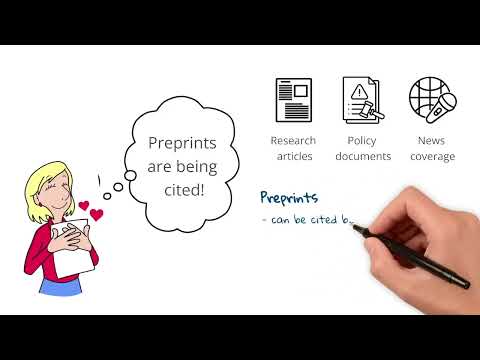#OpenScience #OpenAccess #ScientificPublishing
#OpenScience #OpenAccess #ScientificPublishing
Royal Botanic Garden Edinburgh: Global biodiversity research boost from the archives. “Made available on completion of a five-year project at the Royal Botanic Garden Edinburgh, the [1,831] papers cover everything from the mycology of Beatrix Potter to the first research paper of Edwardian plant hunter George Forrest and early concerns around plant health issues.”
🔍 New on the NFDIxCS blog:
How Large Language Models can support scientific literature research and publication workflows.
The post explores how LLM-based information extraction helps structure and reuse research knowledge more effectively — in line with FAIR principles.
👉 Read more: https://nfdixcs.org/meldung/llm-based-information-extraction-to-support-scientific-literature-research-and-publication-workflows
#AI #LLM #OpenScience #FAIRdata #Research #InformationExtraction #ScientificPublishing #NFDIxCS
LLM-Based Information Extraction to Support Scientific Literature Research and Publication Workflows
How can large language models make scientific research more FAIR and discoverable? Our latest work within NFDIxCS explores how AI can automatically extract key concepts from research papers—linking publications, data, and software more effectively to support transparent and efficient scientific workflows.
Only to note that desk rejections aren't cheap if one is following process, like reading the paper and asking for second opinions.
But I do see how charging for submission would benefit glamour journals. Diamond open access is what we all need, supported by our academic libraries – which they could totally do given the sums spent in journal subscriptions to begin with, were these to be redirected as they should.
On paying for submissions: the system self-corrects because nobody would submit to a journal that then sat it out and did nothing with the submissions. Also, the volume is higher so the fee can be much lower.
On paying for acceptance: the journal has a huge conflict of interest, because lowering standards leads to more acceptance and more payments. Hence predatory journals.
On my watch, if a manuscript is a bona fide attempt at rigorous scientific research and is within the scope of my expertise, I'll send it out for review.
Why shouldn't it? eLife aims at shepherding manuscripts through peer review, with the reviewers, reviewing editor and senior editor all being active, practising scientists, and all discussing with each other their own views on the work presented. So that's what I do. Something else is how vast the editorial board is, and how diverse: no unified view on how to exactly choose manuscripts to be sent out for review. But many share my approach, including the leadership.
What surprised me as editor is how few (about 1 in 3) of manuscript submissions meet the first condition. Why would anyone send a paper for publication that isn't a sensible addition to the edifice of knowledge is beyond me; I'd like to think it's because of publish-or-perish pressures from the bean counters that don't read the papers.
I am not sure how is eLife a prestige journal, but it is surely a journal whose core mission is to upend scientific publishing, which is why I joined it first as reviewing editor and now as senior editor.
The publication cost per paper is indeed a problem*. My own take is if journals have to charge at all, then charges ought to be for submissions, not for acceptances, given that the former scales linearly with costs, whereas the latter doesn't.
https://albert.rierol.net/tell/20161008_Breaking_even_in_scientific_publishing.html
Worse, charging for acceptance creates a conflict of interest, as illustrated by the predatory journals that care only about such payments.
https://albert.rierol.net/tell/20210306_be_paid_for_publishing_scientific_papers.html
* eLife can waive publication costs when requested. But indeed such costs shouldn't exist, because all of them have already been paid by academic institutions: https://archive.blogs.harvard.edu/pamphlet/2012/03/06/an-efficient-journal/
Our Managing Editor is heading to Japan 🇯🇵! We're thrilled to announce Marc’s participation in the prestigious Tateshina Conference on Organic Chemistry from Nov 14–16, 2025.
➡️ https://www.beilstein-journals.org/bjoc/news/BELTEFKSO7GRGGLFZP3RY33T6U?M=Y
#EdiTours #OrganicChemistry #ScientificCommunity #ScientificPublishing #BJOC #DiamondOpenAccess 💎 🔓
They’re not! Discover how preprints are findable, citable, and transforming scholarly communication in our latest ASAPbio Myth Busting whiteboard video.🎬
🎥 Watch here → https://www.youtube.com/watch?v=LzJcELG3WqI
#Preprint #OpenScience #ScholComm #ScientificPublishing

Myth 3: Preprints are not discoverable or citable
@julian @DrEvanGowan @UlrikeHahn @encyclia
This reads super. What I've wanted to do for some time is follow journal editors, i.e., all manuscripts that they edit, that they pick for review and shepherd through peer review.
Maybe a variation or a parameterization of their ORCID stream would show this. At least @OpenAlex knows to show what I want, but does so mixed with the editor's own papers and other contributions.

